Ditapis dengan
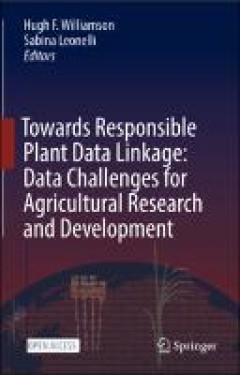
Towards Responsible Plant Data Linkage: Data Challenges for Agricultural Rese…
This book provides the first systematic overview of existing challenges and opportunities for responsible data linkage, and a cutting-edge assessment of which steps need to be taken to ensure that plant data are ethically shared and used for the benefit of ensuring global food security – one of the UN’s Sustainable Development Goals. The volume focuses on the contemporary contours of such c…
- Edisi
- -
- ISBN/ISSN
- 978-3-031-13276-6
- Deskripsi Fisik
- 327 hlm.
- Judul Seri
- -
- No. Panggil
- -

Agricultural Economic Research
- Edisi
- 1
- ISBN/ISSN
- -
- Deskripsi Fisik
- -
- Judul Seri
- -
- No. Panggil
- 338.1005 Agr
- Edisi
- 1
- ISBN/ISSN
- -
- Deskripsi Fisik
- -
- Judul Seri
- -
- No. Panggil
- 338.1005 Agr

Agricultural Research & Extension Network
- Edisi
- 1
- ISBN/ISSN
- 0952-2468
- Deskripsi Fisik
- -
- Judul Seri
- -
- No. Panggil
- 630.5 Agr
- Edisi
- 1
- ISBN/ISSN
- 0952-2468
- Deskripsi Fisik
- -
- Judul Seri
- -
- No. Panggil
- 630.5 Agr

Food and Agriculture
- Edisi
- -
- ISBN/ISSN
- 0-7167-0381-5
- Deskripsi Fisik
- 154 hlm.: ilus.; 29,6 cm.
- Judul Seri
- -
- No. Panggil
- 630 Wor f
- Edisi
- -
- ISBN/ISSN
- 0-7167-0381-5
- Deskripsi Fisik
- 154 hlm.: ilus.; 29,6 cm.
- Judul Seri
- -
- No. Panggil
- 630 Wor f
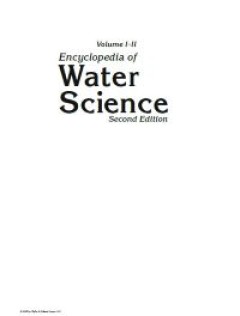
Agriculture - Encyclopedia of Water Science
Filled with figures, images, and illustrations, Encyclopedia of Water Science, Second Edition provides effective concepts and procedures in environmental water science and engineering. It unveils a wide spectrum of design concepts, methods, and solutions for enhanced performance of water quality, treatment, conservation, and irrigation methods, as well as improved water efficiency in industrial…
- Edisi
- 2
- ISBN/ISSN
- 978‑0‑8493‑9627‑4
- Deskripsi Fisik
- 1415 hlm.
- Judul Seri
- -
- No. Panggil
- -
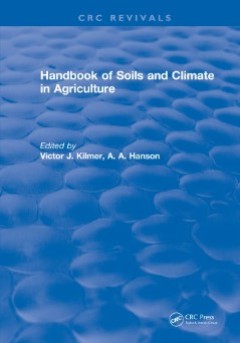
Handbook of Soils and Climate in Agriculture
This book contains Climate of the United States, Soil Classifications, Soil Physics, Soil Chemistry, Soil Microbiology, Soil Organic Matter, Soil Fertility, Fertilizers, and Plant Nutrition, Fertilizer Sources and Composition, Lime, Lime Materials, and other Soil Amendments, Soil and Water Management and Conservation, Soil and Water Management and Conservation: Wind Erosion.
- Edisi
- -
- ISBN/ISSN
- 978-1-351-07307-3
- Deskripsi Fisik
- 455 hlm.
- Judul Seri
- -
- No. Panggil
- -
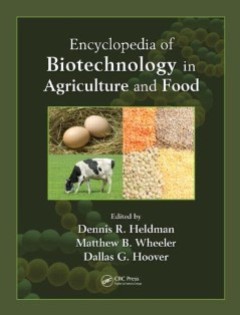
Encyclopedia of Biotechnology in Agriculture and Food
The Encyclopedia of Biotechnology in Agriculture and Food provides users with unprecedented access to nearly 200 entries that cover the entire food system, describing the concepts and processes that are used in the production of raw agricultural materials and food product manufacturing. So that users can locate the information they need quickly without having to flip through pages and pages of …
- Edisi
- -
- ISBN/ISSN
- 978-0-8493-5027-6
- Deskripsi Fisik
- 1342 hlm.
- Judul Seri
- -
- No. Panggil
- -
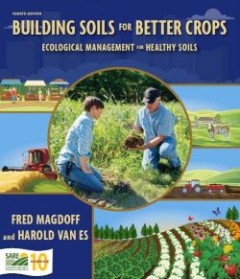
Building Soils for Better Crops: Ecological Management for Healthy Soils
The 4th edition of Building Soils for Better Crops is a one-of-a-kind, practical guide to ecological soil management. It provides step-by-step information on soil-improving practices as well as in-depth background―from what soil is to the importance of organic matter. It will show you how different physical, chemical and biological factors of the soil interconnect, and how management practice…
- Edisi
- 4
- ISBN/ISSN
- 978-1888626193
- Deskripsi Fisik
- 410 hlm.
- Judul Seri
- Handbook Series 10
- No. Panggil
- -
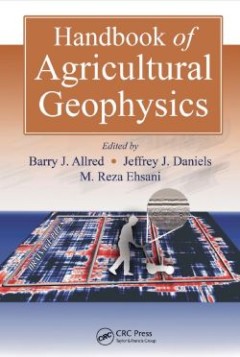
Handbook of Agricultural Geophysics (Books in Soils, Plants, and the Environm…
Precision farming, site infrastructure assessment, hydrologic monitoring, and environmental investigations — these are just a few current and potential uses of near-surface geophysical methods in agriculture. Responding to the growing demand for this technology, the Handbook of Agricultural Geophysics supplies a clear, concise overview of near-surface geophysical methods that can be used in a…
- Edisi
- -
- ISBN/ISSN
- 978-0-8493-3728-4
- Deskripsi Fisik
- 434 hlm.
- Judul Seri
- -
- No. Panggil
- -
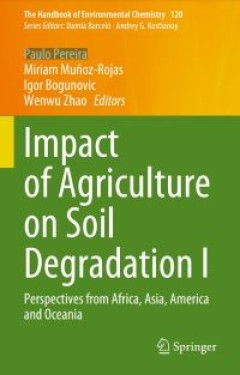
Impact of Agriculture on Soil Degradation I: Perspectives from Africa, Asia, …
This book covers the main effects of agriculture practices on soil degradation in several countries from Africa, America, Asia, and Oceania, and it elucidates the impact of chemical agents on soil quality, namely, the use of fertilizers, herbicides, pesticides, soil acidification and microplastics pollution. In these continents, a large number of the population depend on agriculture, which sets…
- Edisi
- -
- ISBN/ISSN
- 978-3-031-32168-9
- Deskripsi Fisik
- 398 hlm.
- Judul Seri
- -
- No. Panggil
- -
 Karya Umum
Karya Umum  Filsafat
Filsafat  Agama
Agama  Ilmu-ilmu Sosial
Ilmu-ilmu Sosial  Bahasa
Bahasa  Ilmu-ilmu Murni
Ilmu-ilmu Murni  Ilmu-ilmu Terapan
Ilmu-ilmu Terapan  Kesenian, Hiburan, dan Olahraga
Kesenian, Hiburan, dan Olahraga  Kesusastraan
Kesusastraan  Geografi dan Sejarah
Geografi dan Sejarah